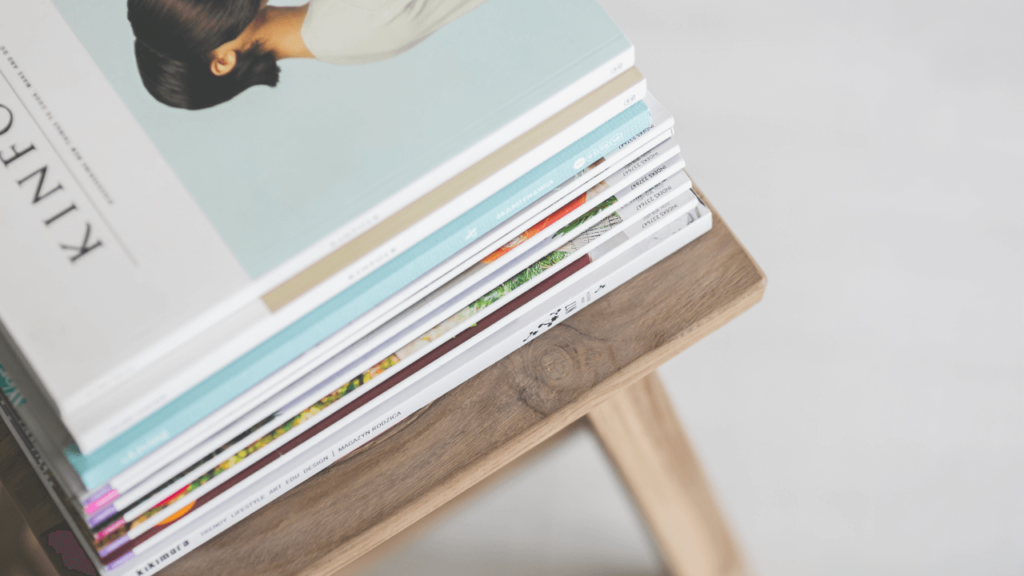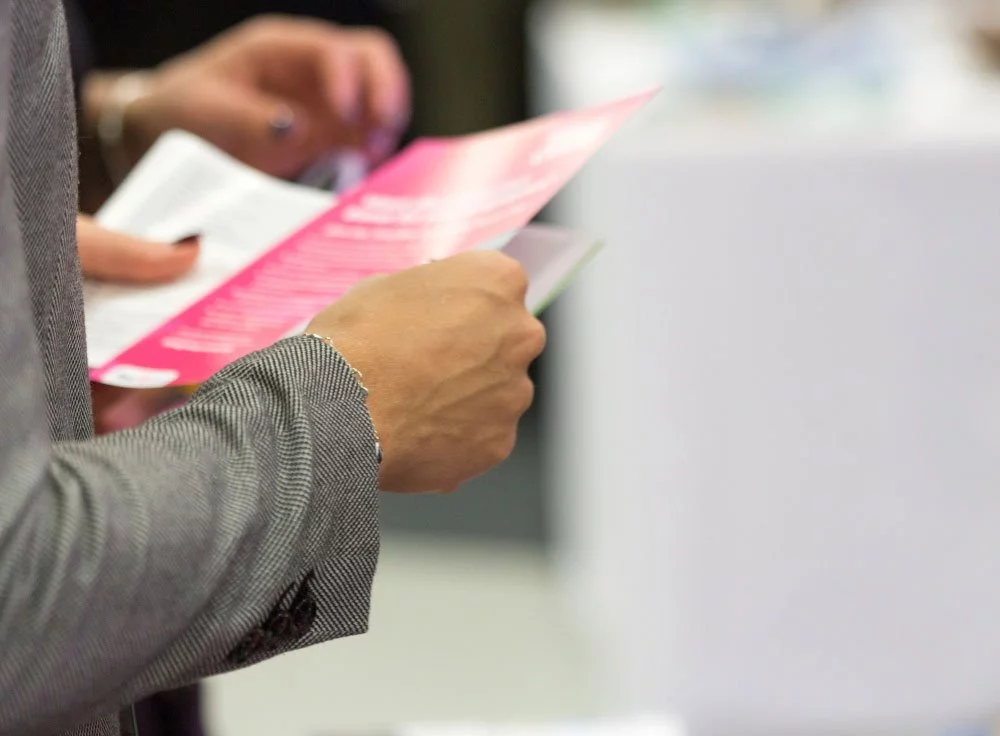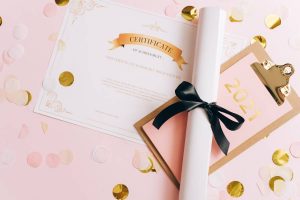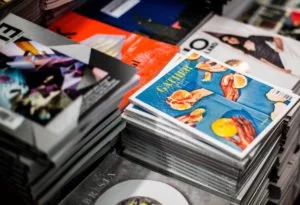In a digital era, the printed components of marketing are often underestimated and categorized as ineffective and old-fashioned. However, there’s a reason that brochures remain marketing favorites, even with the rise of digital marketing. According to the experts from Design Hill, 95% of visitors that obtain brochures become aware of a business.
Your brochure is a tangible tool to inform potential customers and existing ones, kind of like a silent salesperson. They can link your audience to your digital marketing efforts, and ultimately leave great first impressions.
One of the most common questions businesses ask when they’re choosing a paper for printing their brochures is, “which brochure paper should I choose?” If you’re asking yourself the same thing, don’t worry. It’s a fair question as brochure paper types can be confusing.
What kind of paper to use for brochures?
If you’re wondering about the best type of paper for brochures, the easy answer is that most brochures will look and feel good when they’re printed on 100 lb Silk Text. This is because silk-coated paper has a low surface sheen and an incredibly luxurious texture. It produces a coating that’s somewhere between a glossy and matte finish. It’s simply the best brochure paper type when highlighting premium products and services.
The longer and much more complicated answer is “it depends” as there are three factors to consider when choosing what paper to use for brochures.

Brochure Paper Type Consideration #1: Weight matters
Print is special among marketing tools because it’s tactile. This is why paper weight is important during your brochure paper type selection. It directly affects the way a reader will physically interact with your brochure. Paper weight is a great indicator on whether a piece feels high-end and luxurious or downtown, back-alley cheap.
How vital is this tactile feel factor? Well, studies show that there’s a direct relationship between sensory stimulation and our emotions. A brochure doesn’t only convert a reader through visual senses, touch is just as important. For instance, if you have someone handing out your brochures along Makati CBD, users are more likely to keep those in their bags if they’re printed on glossy paper. But if they’re just printed on bond paper, passersby will probably just throw them in the trash can.
Think beyond design and provide your target audience with a high-quality feel. The rich sensory experience of paper you use for your brochure will engage them and prompt them to read whatever content you have on it.
To make things a little easier, here are the most popular paper weights for brochures, in order from lightest to heaviest:
- 70 lb. Text
- 80 lb. Text
- 100 lb. Text
- 80 lb. Cover
- 100 lb. Cover
Here are some things to weigh (pun intended) when choosing the best type of brochure paper weight:
- Cost
If you have a tight budget, a 70 lb text stock is the most affordable route and the lightest. But even though a 70 lb. text is doable, it’s not usually recommended as it lacks structural stability.
For example, think about the pages of a fashion magazine or a high-end coffee table book. If you want your brochure to have the same feel, go for a 100 lb text. It will provide the high-quality look you want at reasonable price. The paper feels luxurious, leaves a great impression, and works well with most standard brochure designs.
- Reader experience
Your brochure’s structure also plays a vital part when choosing the paper weight. Yes, 10 lb text stock is flimsy, but a 100 lb cover stock can be too thick as well. You don’t want your readers to have trouble trying to navigate your brochure’s content.
To successfully choose the paper weight, think about the structure that you want for your brochure. Heavier types of paper stock can work well for bi-folds, but they will be tricky for z-folds and letter-folds.
- Purpose
If sales reps will be giving out your brochures to potential clients during meetings, the 100 lb text weight is the best choice. On the other hand, if the brochures will be handed out at a conference or a trade show for attendees to shove in their bags with other items, an 80 lb cover is a better choice. It will still look good the following week when it comes out of the briefcase, backpack, or shopping bag.

Brochure Paper Type Consideration #2: Coated vs. uncoated paper
Alongside graphic design, the coatings of your brochure paper are important in creating visual appeal. While there’s an endless variety of coatings, most marketers stick with silk, gloss or uncoated stock. It all comes down to the look you’re trying to achieve and the brand of your organization. The coating you choose should be incorporated in your design and fit your overall message.
You also need to ask yourself these questions: Who’s my audience? Do I have a lot of text? How will my logo appear? Am I printing photos?
When you’ve answered these questions, it’s time to factor in the different types of brochure paper coatings:
Gloss coated paper
Glossy paper often reflects higher quality and appears prestigious. It’s great for pieces that will showcase a lot of artwork and photographs because glossy paper doesn’t allow the ink to seep into the paper fibers. Instead, the ink stays on top, providing depth to the images. But while glossy papers if great for illustrations and photos, it’s not exactly the best choice if you have a lot of text in your brochure. The gloss will produce a glare that will make text harder to read.
Matte coated paper
Matte stocks are the most popular pick for brochures with a balanced mix of text and photos. With matte brochure paper, you won’t have the glare that comes with glossy paper but there’s still enough shine to make your photos look striking. It’s the perfect compromise.
Uncoated paper
While uncoated paper looks less professional and luxurious, it’s a popular trend today that’s driven by arguably the most influential generation: millennials. Like it or not, they make up a huge sector of the market.
Research shows that millennials prefer buying from companies who have practices that are environmentally sustainable. Uncoated paper has that organic, natural-looking texture that reflects an eco-friendly and low-key persona. Uncoated brochures also have no glare, so they’re definitely the best option if your brochure is text-heavy.
However, uncoated papers don’t provide the same look and feel that coated stock do, so your designer will have to keep those in mind.
Brochure Paper Type Consideration #3: Unique Paper Ideas
While brochures come in standard weights and coatings, you can think outside the box when choosing what paper to use for your brochure. Here are some unique ideas to make your brochure truly engaging to the reader’s senses.
Colored paper
When you think of brochure design, colored paper isn’t the first option that pops to mind, but there are options that will give you a competitive edge. Ask your printer if they can print with yellow or white ink. If they can, consider producing visual contrast by using yellow or white ink with colored paper. Colored paper doesn’t have to be flashy or bright either. An off white or natural beige shade is a favorite of professional organizations such as law firms and banks.
Pearlescent coating
Pearlescent is a type of coating that’s not limited to a creamy and pearl color. It basically means a paper with an iridescent coating that comes in numerous shades. Pearlescent coating will give your design a classy sparkle, creating long-lasting impact with your printed materials.
Special textures
These can make your printed materials unique and enhance the sensory experience that you provide to readers. Some examples are felt, embossed linen, super smooth, wove, and vellum. These all have varying textures that will add a special dimension to your design.
Standard Brochure Sizes
Effective brochure marketing relies on the harmony of design, brochure paper type, size, and fold. After you’ve picked the best type of paper for your brochure, it’s time to think about the size and fold that will best complement its design.
Below is a compiled list of brochure sizes and the best fold options for each size.
8.5” x 11”
This is the most popular standard brochure size as it provides a perfectly balanced area for both detailed text and visual design. It’s frequently used for general purposes, especially in relaying product and service information.
Common folds:
- Half-fold
- Z-fold
- Tri-fold
Other folds:
- French fold
- Gate fold
- Double parallel fold
8.5” x 14”
This is also a popular standard brochure size. When folded, it provides a slightly larger area for brochures that have two to three panels, making it easier on the eyes.
Common folds:
- Half-fold
- Z-fold
- Tri-fold
Other folds:
- French fold
- Gate fold
- Double parallel fold
5.5” x 8.5”
Often called memo size, this is the smallest standard size for brochures. But even though it’s small, it packs a punch. With this size, you can focus on your product’s selling point and make it more accessible to interested recipients. You can also save a bit on your marketing spend when you use this size.
Common fold: Half-fold
9” x 12”
Slightly larger than letter size, the 9” x 12” is a great all-around size for three-panel and four-panel brochures. You will be able to create more text and detailed designs due to the larger content area.
Common folds:
- Half-fold
- Z-fold
- Tri-fold
Other folds:
- French fold
- Gate fold
- Double parallel fold
- Accordion fold
11” x 17”
Also known as tabloid size, this is the standard for four-panel folds. The best fold for this size if the half-fold then trifold configuration.
Common folds:
- Accordion Fold
- Half-Fold Then Trifold
- Double Gate Fold
Other folds:
- Trifold
- Roll Fold
- Double Parallel Fold
- Half-Fold
- Gate Fold
11” x 25.5”
This is the biggest standard brochure size and the perfect one if you need a bigger area for your four-panel branches. This size is ideal for businesses with a wider range of products and services that they want to promote. It is also suitable for brochures that detail a sequence of steps.
Common folds:
- French Fold
- Double Gate Fold
- Double Parallel Fold
Other folds:
- Trifold
- Roll Fold
- Gate Fold
- Accordion Fold
- Half-Fold
After you choose the size and fold for your brochure paper, you’re all set to create a brochure that will wow potential customers and get them interested in your business.
There are endless opportunities when choosing paper used for brochures. When choosing the best type of brochure paper, size, and fold, it all boils down to your vision for your printing project. Aside from that, there should also be good collaboration between your designer and the digital printing company. Talk to your printer before starting on the design and tell them about your audience, goals, objectives, and potential brochure content.
When all the people involved are aligned, you’ll be able to create marketing tools that are versatile, cost-effective, and easy to distribute to your target audience. Compared to billboards that people drive by before they can read them, or flashing banner ads that compete for attention, you can never go wrong with brochures that provide people with a simple and tangible way to receive information.
Good luck with your brochure paper shopping!


